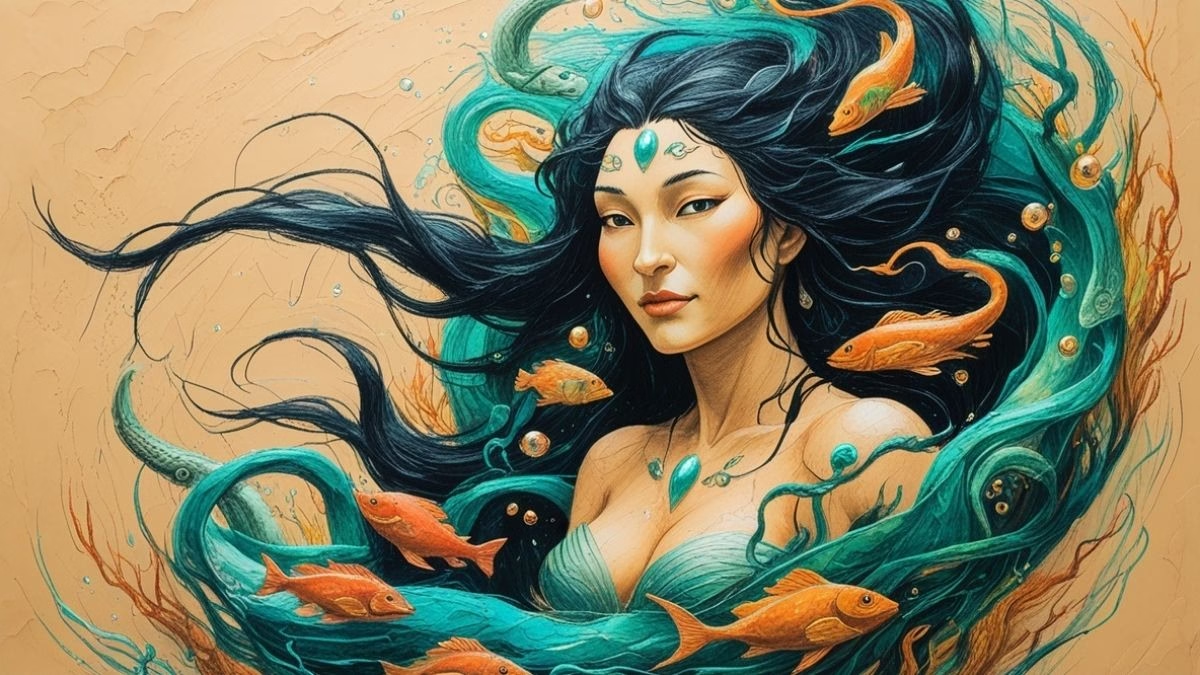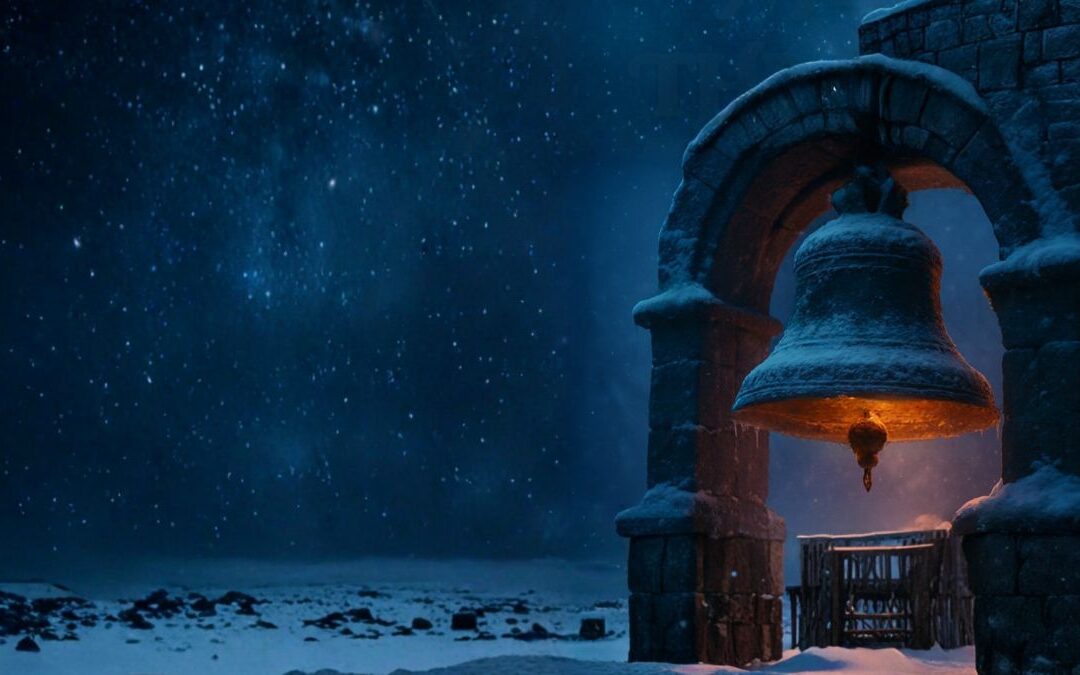SparkCast Episode
The SparkCast episode is not just a reading of the article below; it’s a lively discussion based on the topic of the article, so you don’t want to miss it!
[ppp_patron_only level=5]
[/ppp_patron_only]
Have You Ever Wondered What Secrets the Ocean Keeps?
Have you ever stood at the edge of the ocean and felt a sense of awe mixed with a little bit of fear? It’s a vast, mysterious world down there, and for centuries, people have created stories to explain its power. Today, we’re traveling to the icy waters of the Arctic to explore one of the most powerful and poignant of these tales: the Inuit myth of Sedna, the mother of all sea creatures.2 It’s a story that’s part creation myth, part horror story, and part profound lesson about our relationship with the natural world.
The Girl Who Refused
Like all good legends, the story of Sedna has many versions, but they often begin in a similar way: with a beautiful young woman who lived with her father, a widower. Sedna was proud and perhaps a bit vain, and she refused every suitor her father presented.3 One day, a handsome hunter appeared, promising her a life of comfort in his land, a tent made of the softest furs and a bounty of food. Despite her father’s warnings, Sedna was charmed and agreed to go with him.
A Horrifying Discovery
She traveled with her new husband across the sea to his island home, only to discover a terrible truth. He was not a man at all, but a fulmar—a seabird—in disguise. Her new home was not a warm tent but a filthy, windy nest perched on a cliff, and her food was nothing but raw fish brought by the other birds. Sedna was trapped, miserable, and cried out across the water for her father to save her.
Betrayal and a Terrible Sacrifice
Hearing her cries, her father loaded his kayak and paddled to the island to rescue her. As they fled across the water, the enraged bird-husband and his kin swooped down, flapping their wings to create a terrifying storm. The waves crashed over the small kayak, threatening to capsize it. In a moment of pure terror and self-preservation, her father made a horrific choice: to save himself, he threw Sedna overboard into the raging, icy sea.
The Birth of a Goddess
Sedna clung desperately to the side of the kayak, her fingers frozen to the gunwale. To make her let go, her father took his knife and, one by one, chopped off her fingers at the joints. As her frozen fingers fell into the ocean, they transformed. Her fingertips became the small seals, her middle joints became the larger bearded seals and walruses, and her final joints became the great whales. Having lost her fingers, Sedna sank to the bottom of the ocean, where she did not die. Instead, she became a powerful and vengeful goddess, the ruler of the underworld, Adlivun, and the master of all the creatures she had just created.
The Enduring Power of Sedna
This is more than just a scary story. The Inuit myth of Sedna is a cornerstone of a culture that depends on the sea for survival.4 Sedna controls the abundance of game. When she is happy and her hair is combed and clean, she releases the animals for the hunters. But when she is angered by the transgressions of humans—disrespect, wastefulness, broken taboos—she withholds the animals, bringing famine. Shamans must then travel in a trance to the bottom of the sea to appease her, to comb the tangles from her hair (which she cannot do without fingers), and beg her forgiveness. It’s a powerful metaphor for ecological balance. The story teaches that the ocean and its creatures must be treated with respect, that our survival is directly linked to the health of the natural world, and that the consequences of disrespect are severe.
So, what do you think this ancient story can teach us in our modern world? Let us know your thoughts in the comments below!
Deep Discussion Questions:
- How does the story of Sedna change your perception of the ocean or sea creatures?
- Sedna’s father betrays her out of fear. Can you think of a time when fear has caused people (or you) to make a poor decision? What were the consequences?
- What modern parallels can we draw from the idea that disrespecting nature leads to hardship and famine?
Speaking Challenge:
Retell the most dramatic part of Sedna’s story—from the moment the storm hits to her sinking into the sea—in your own words. Try to use descriptive language to convey the terror and the magic of the moment.
Hint for English Learners: Focus on using strong verbs and evocative adjectives. Instead of “the storm was bad,” try “the terrifying storm raged,” or “the monstrous waves crashed.” Practice speaking with emotion to make the story come alive.









0 Comments